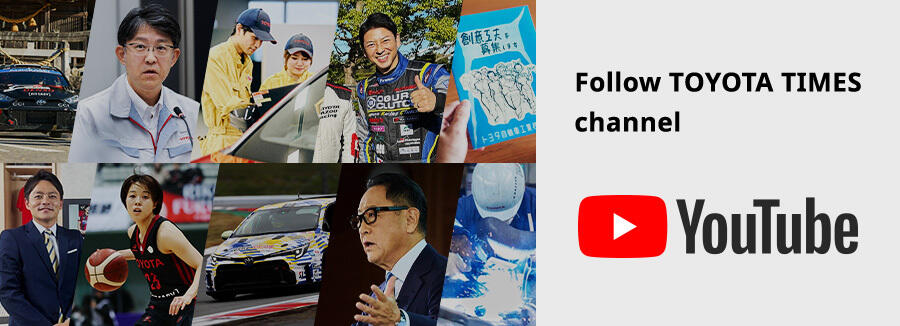
As Woven City gears up for its official launch this fall, the preparations are not focused solely on infrastructure. We spoke with the teams working to recruit and receive residents.
Idea seeds close at hand
With Weavers being just as important as Inventors, the briefing we described earlier was designed to ensure that potential participants understand Woven City’s core concept, and to help them visualize living in the community and contributing to various demonstration trials.
The most eye-catching feature of these sessions is no doubt the lawn-covered floor. In fact, this idea was borrowed from elsewhere.
“We didn’t want to make it formal, and we wanted to give a sense of the vibe before people had set foot in Woven City.”
This was WbyT’s first such briefing, and although they had decided on the information to be shared, the “how” was a key point.
In particular, the team focused on households. The session was attended by individuals, couples, and families. Those who put up their hands as potential residents may already be familiar with the city or passionate about the project, but how do you ensure that partners and children who will also make the move are not left behind, and equally engaged? Kusu and the other WbyT members discussed various ideas that will help with public recruiting further down the line.
In the process, last fall the team set its sights close to home—their own office in Nihonbashi, Tokyo, which features the following space:
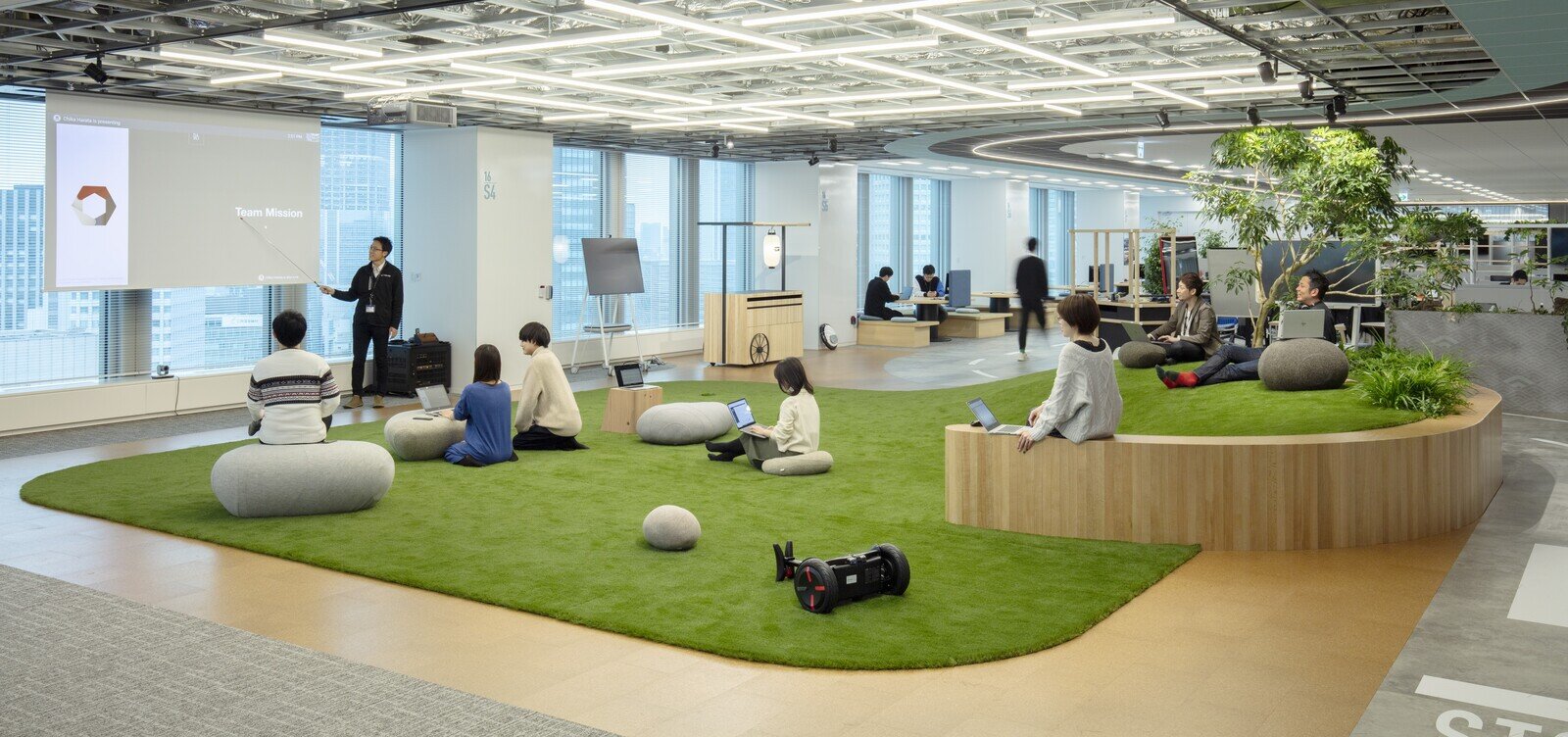
Of course, the office also has conference rooms where important meetings are held. At other times, however, staff can stretch their legs out on the grass for more candid and casual conversations.
“Our workplace is not overly formal, with a culture where you can talk about anything on your mind and work together across department lines to find solutions,” says Kusu. “I am confident that, even after the official launch, Woven City will retain the same friendly atmosphere. We wanted people to feel that at our sessions as well.”
Initially, the team had also thought of setting out tables and chairs, but then decided that sitting on grass would bring attendees closer together and allow them to relax while listening to the presentation. Rough images of the venue were drawn up, and things moved swiftly from there.
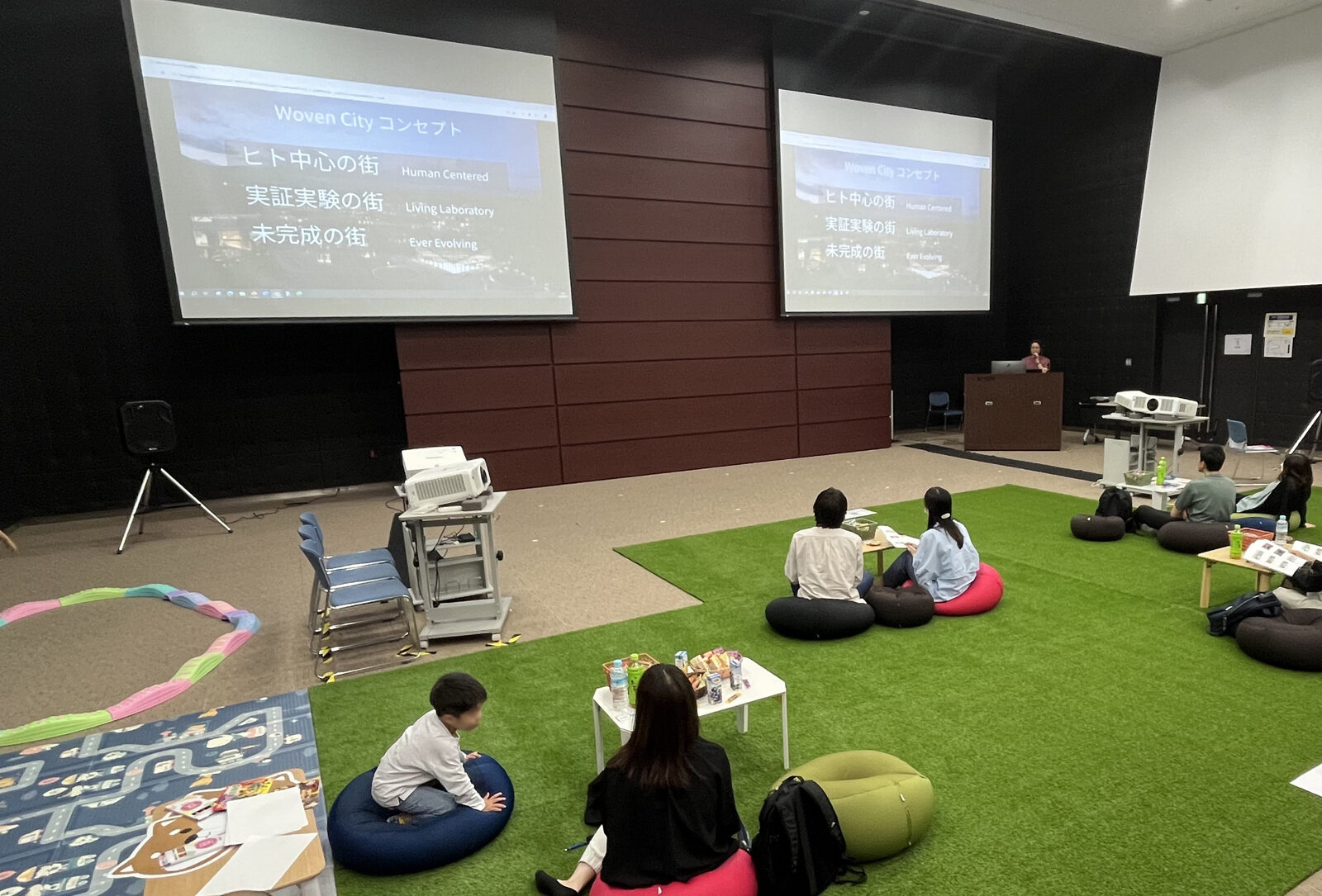
From grass to road
The briefing was actually split across two venues, with an interactive session also running at the same time to offer a taste of Woven City. Let’s take a closer look.
Participants passed through a mock-up of the entry gates that will greet visitors at Woven City’s Welcome Center, as showcased in our previous article. Leaving behind the lawn of the info session, this venue had paths marked out in the form of a road—perfect for a test course for mobility.
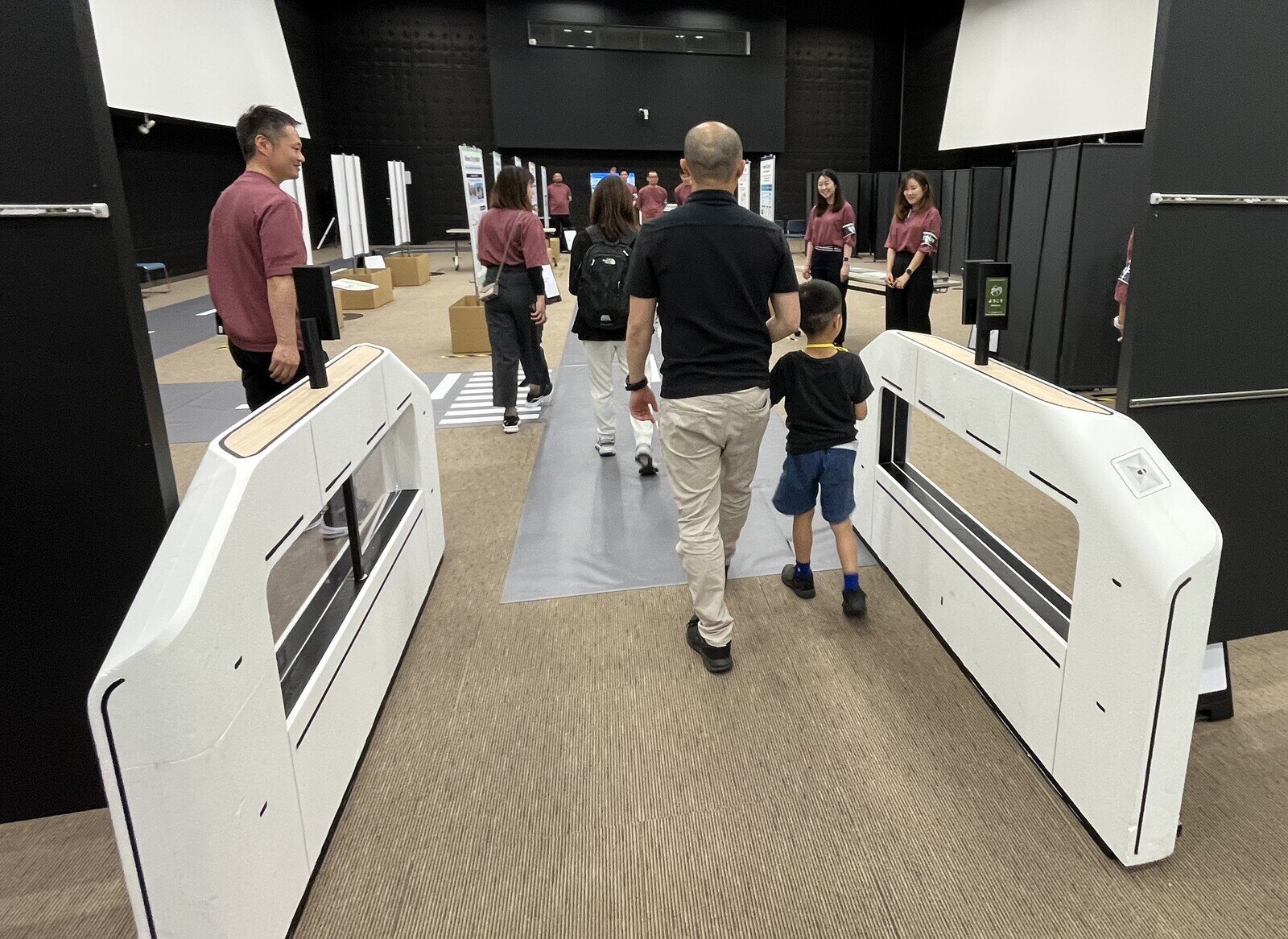
Inside the venue, participants found panels illustrating life in Woven City and its surrounding environment, as well as a chance to stroll the streets in virtual reality.
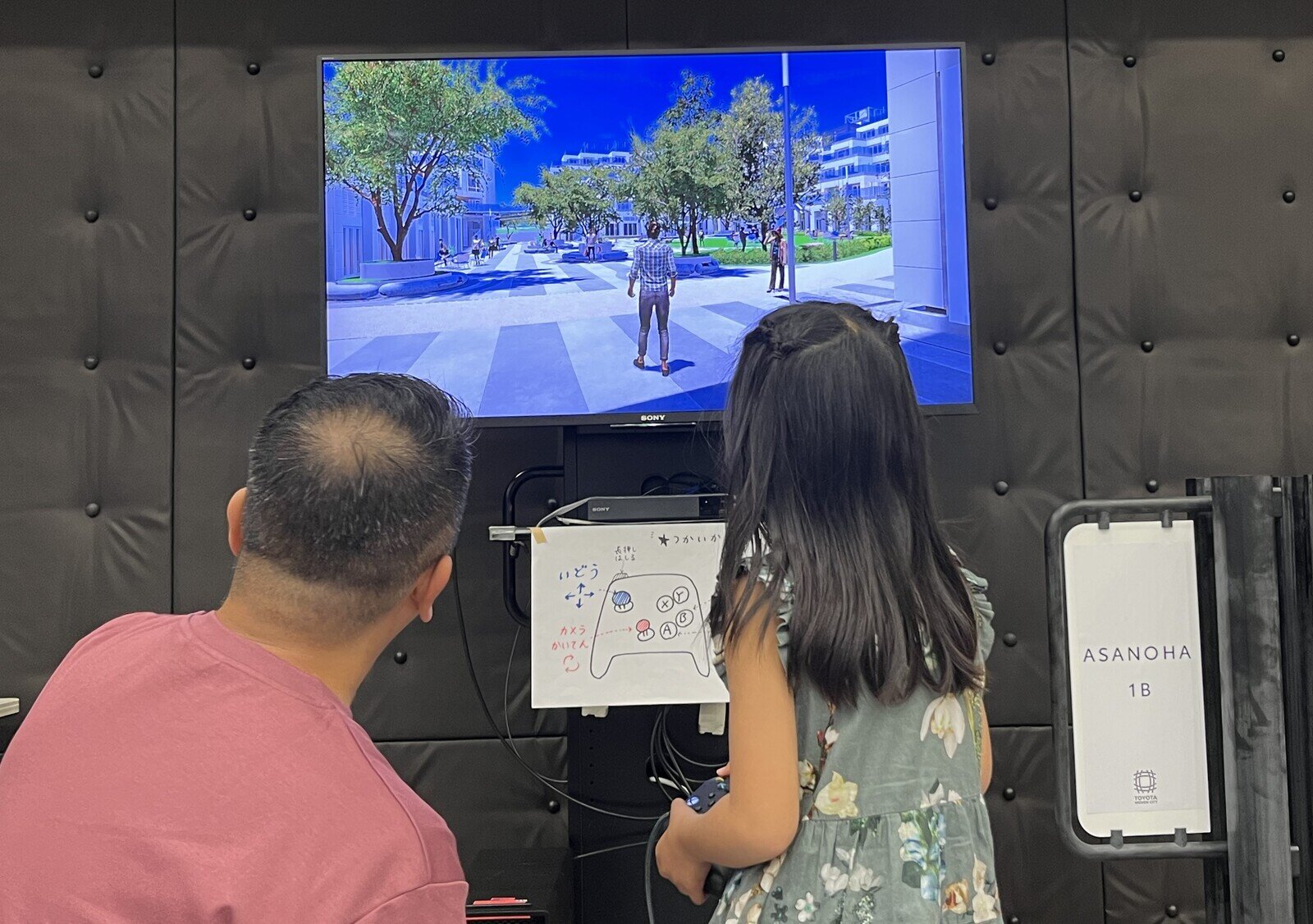
They experienced what it would feel like to encounter one of the transport robots that will move through Woven City’s residential areas, automatically detecting and avoiding people. The walkway where this took place was made a similar width to the shared corridors used by the city’s residents.

After the robot encounter, staff asked participants about their experience, giving them a sense of how they might take part in trials and provide feedback.
Toyota Times spoke with attendees, who said, “I would feel reassured if we could tell that the robot had noticed us (via some kind of signal).” Another added, “I’m worried whether a child on their own would be safe.” Such input is sure to drive the technology’s further evolution.
Atsushi Narita is part of the team responsible for designing the user experience (UX). He collaborates with Kusu’s team in putting together elements such as the briefing and interactive session. He explained the intent behind the two sides of the event.
Narita
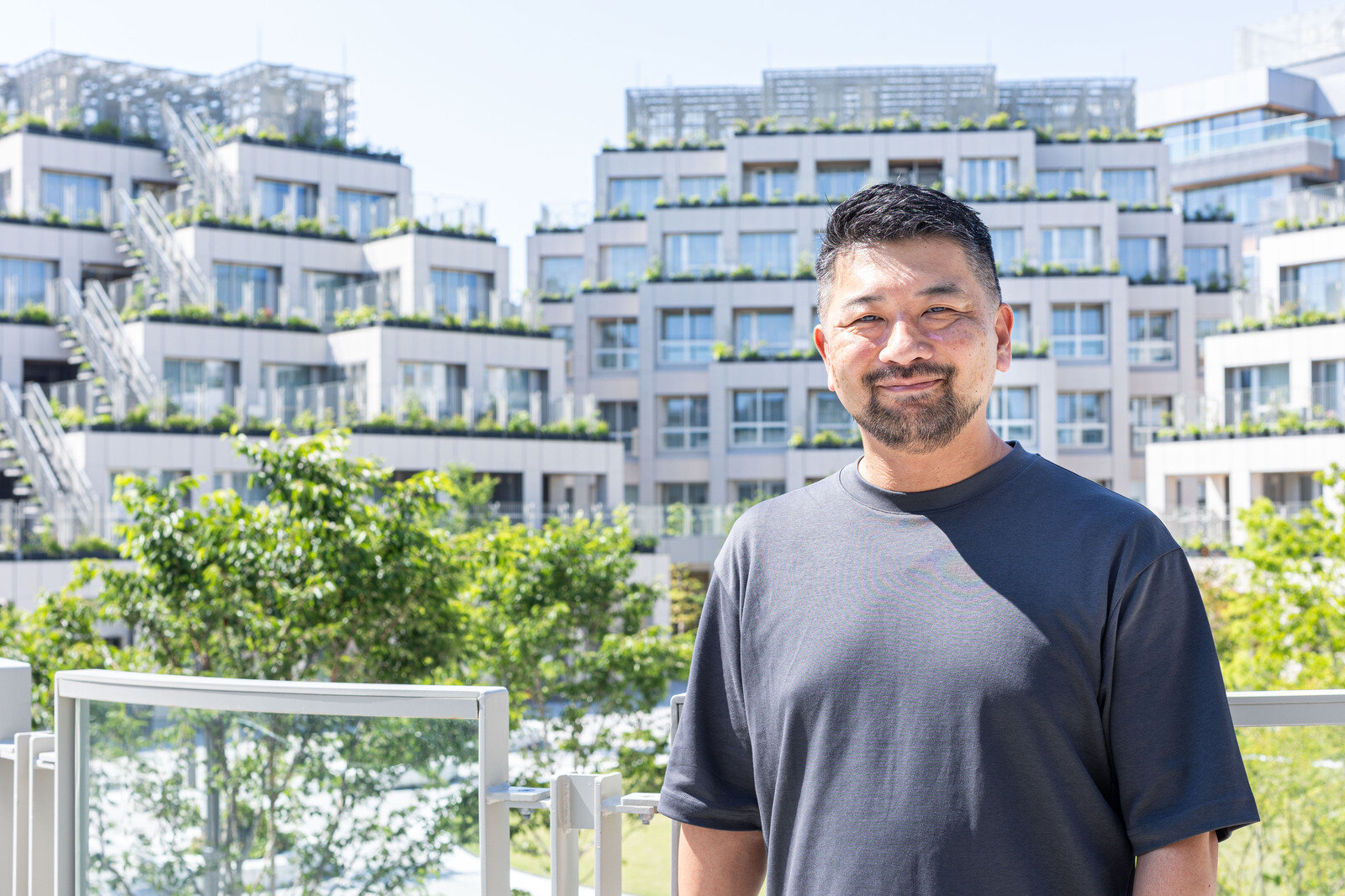
Collectively, we talked about what kind of relationship we, the people working in Woven City, want to create with the Weavers and Inventors. The underlying idea is that, rather than receiving Weavers as guests or customers, we will work together in co-creating the future of mobility in Woven City.
As much as possible, incorporating the feel of our office into the briefing and the atmosphere of the interactive session was about creating a relationship of acceptance as equal peers, rather than us talking down to the participants. I was really glad to see everyone leaving with smiles on their faces.
“Rather than receiving Weavers as guests or customers, we will work together in co-creating the future of mobility in Woven City” ——this sentiment was shared not only by the team designing the briefing and interactive sessions, but also by the members preparing to welcome Woven City’s residents.

